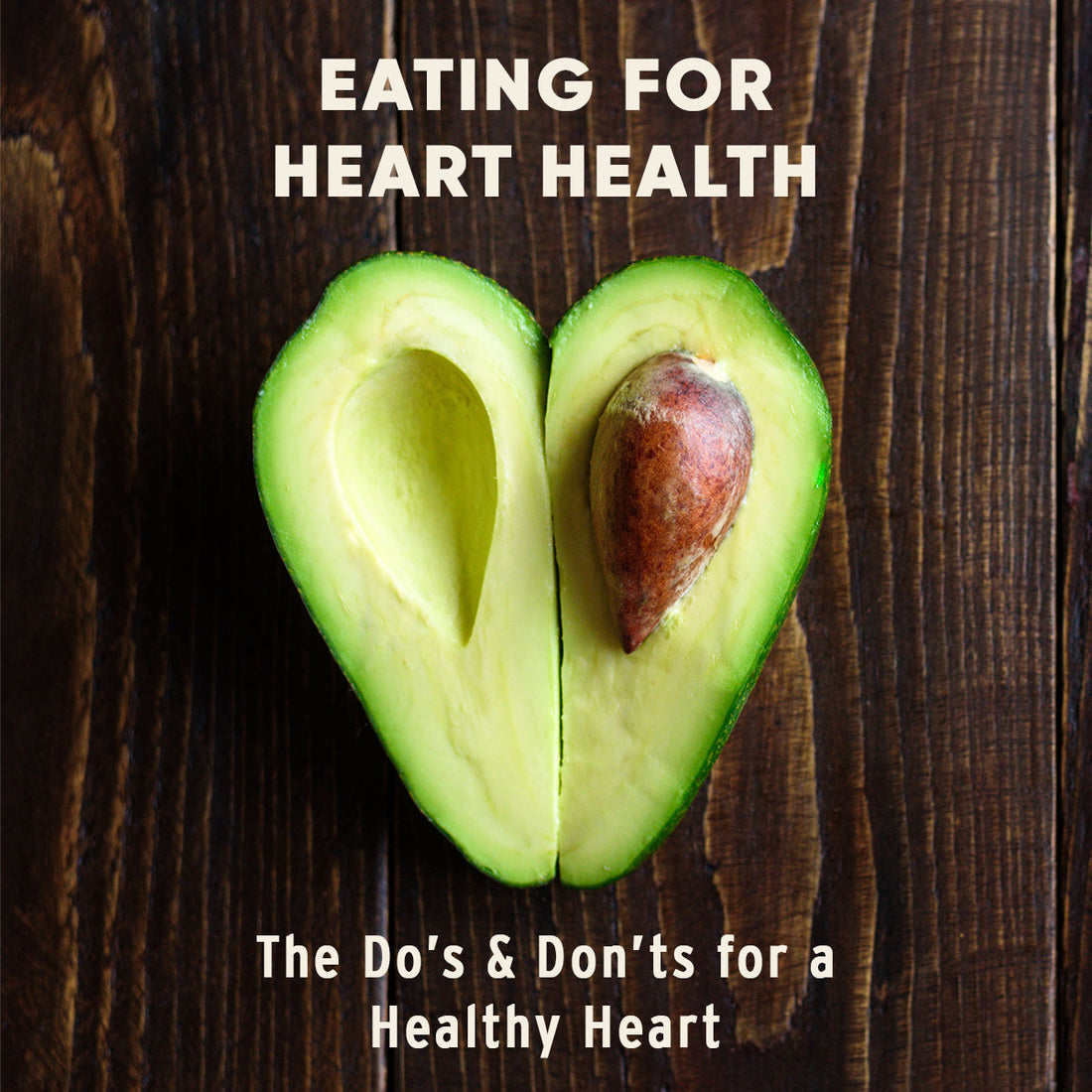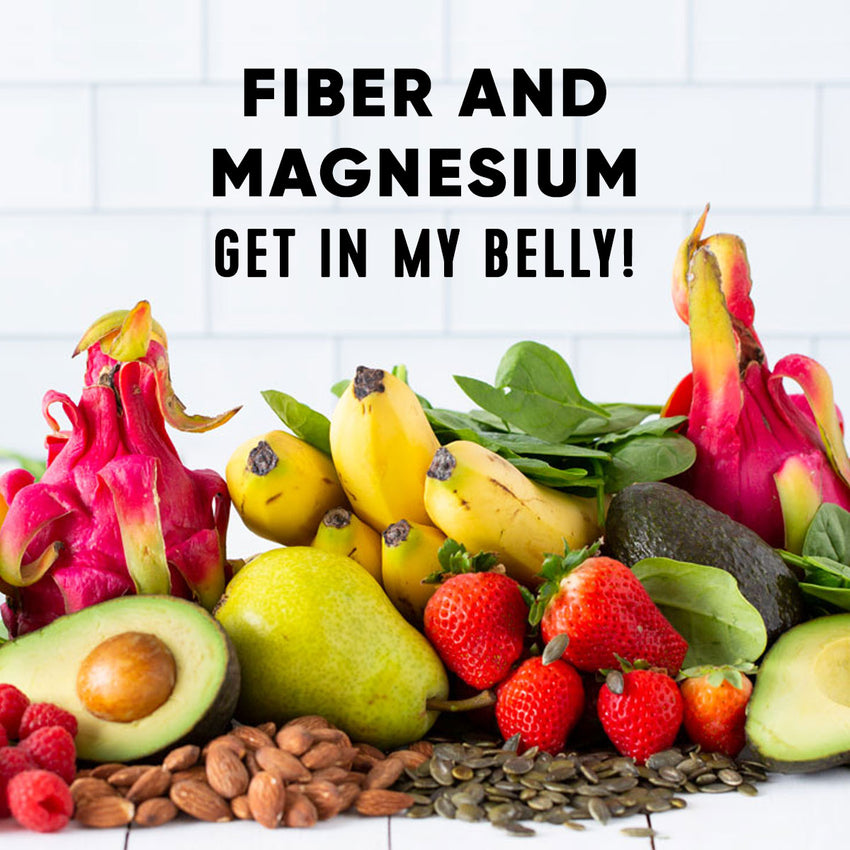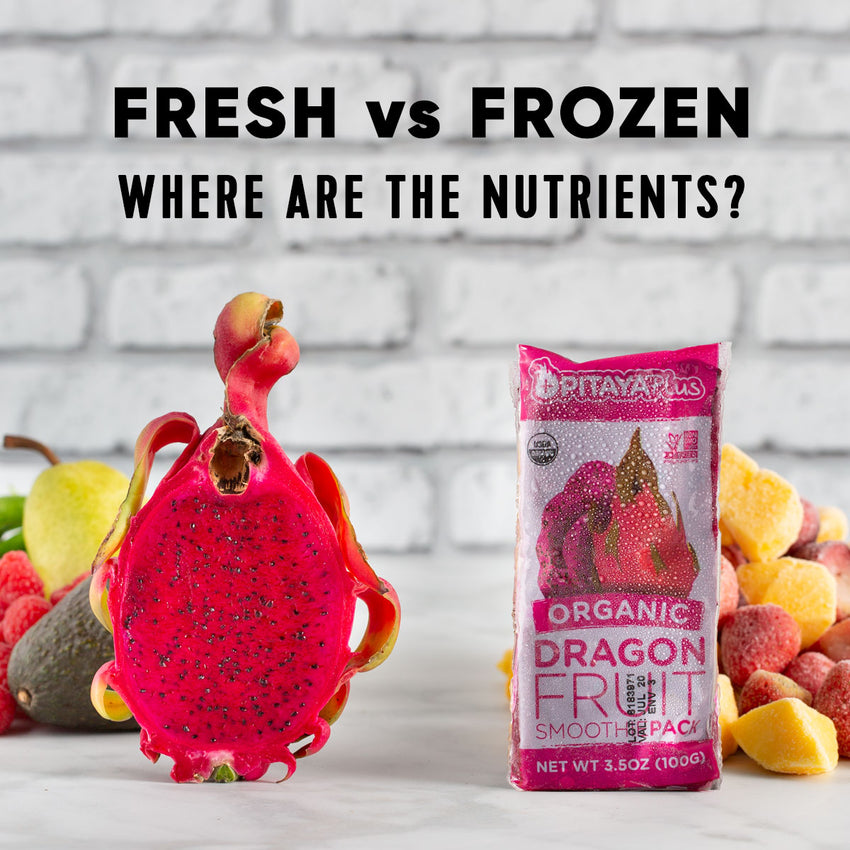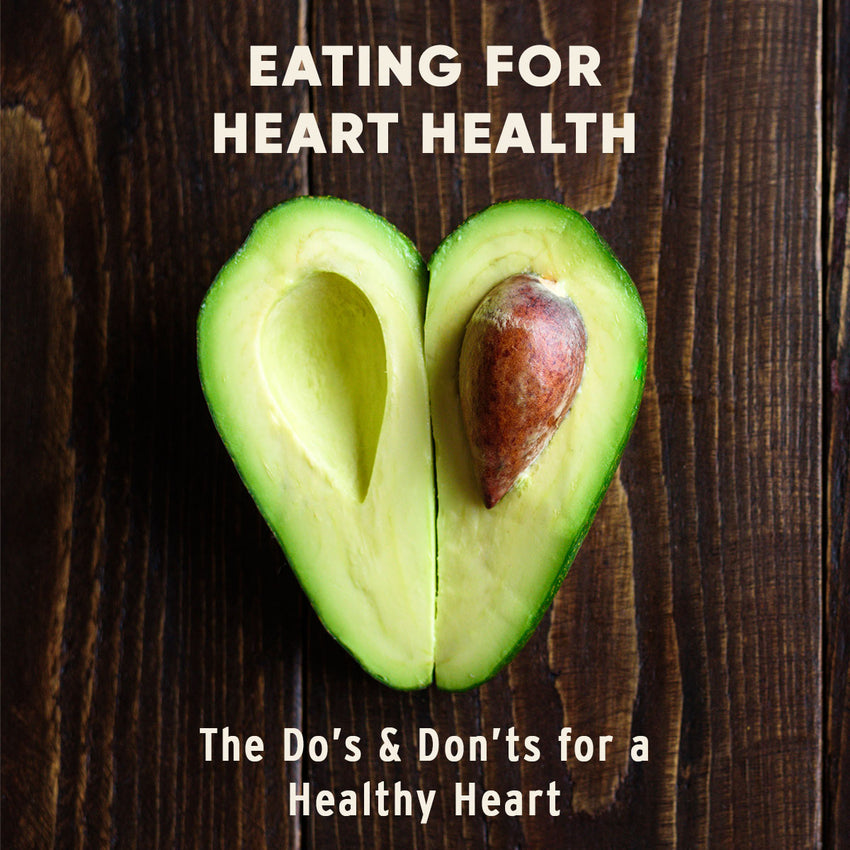Eating a balanced, nutrient-dense diet is one of the simplest and most effective ways to keep your heart in tip top shape. Our tickers work hard to pump fresh blood throughout our body and it is time to show our appreciation. Focusing on heart health has never been more important. With one-third of the population suffering from heart disease, making a few minor changes in our diets can have significant positive effects on the health of our heart. Eating a heart healthy diet is not just for those suffering from heart disease or hypertension, it is adopting a healthy approach to foods which leads to overall well-being.
Tame the Salt
When you think of heart health, and what mostly affects it, undoubtedly what comes to mind is sodium. Reducing the amount of sodium consumption is an important part of a heart healthy diet. Although sodium is essential for your body to function properly, and like anything in excess, too much sodium can be harmful especially for those with high blood pressure. Reducing the amount of table salt you use is a great first step but hidden sodium is in many of our favorite condiments, packaged foods and convenience/fast-foods. Healthy adults should have no more than 2,300mg of sodium a day. Start by eating more fresh foods and avoiding processed foods. Fresh fruits and vegetables are naturally low in sodium as well as frozen produce. Choosing fresh meats from the butcher counter instead of processed meats such as bacon, sausage, and hotdogs will also help limit the amount of sodium.
Start Reading Labels:
Packaged foods often have high levels of sodium. Frozen entree meals, canned soups, canned vegetables, snack foods are notoriously high in sodium. Start reading labels to get comfortable choosing the right foods to meet your needs. Be on the lookout for products claiming to be “salt free”; it’s almost always not the case! To make it a bit more clear, here are what some of the terms mean:
- Salt free - less than 5mg sodium
- Low sodium - 140mg of sodium or less per serving
- Reduced sodium - At least 25% less sodium
Spice it up

Nobody likes bland food! While salt is the usual go-to for adding flavor, switch it up with herbs, dried spices, vinegar or citrus. This helps minimize the sodium while still elevating flavor. Adding fresh herbs is a great and underrated way to make dishes bold, bright, and fresh, try fresh parsley, basil, cilantro, dill, tarragon, thyme, or rosemary. Dried cumin, allspice, cayenne, nutmeg and paprika are staples in most spice cabinets and great additions in sweet and savory meals. Dialing up the heat can also increase favor. Dry red pepper flakes (quick tip: buy a new one! Chances are the one that’s been in your cabinet for years has lost its mojo), cayenne pepper or fresh diced spicy peppers can spice (and heat!) without the sodium. You can also buy a sodium-free seasoning blend or make your own at home!
Fill up on fiber

Viscous soluble fiber (fun to say isn’t it?) is not only optimal for digestion but it is also fantastic for your heart. Soluble fiber helps to control cholesterol levels and better manage blood sugars levels, which is important for heart health. Start by filling half your plate with fruits and vegetables to increase fiber. I start every dinner with a small side salad full of leafy greens and raw veggies. Fiber is often forgotten but a powerful nutrient that helps maintain a healthy weight by keeping you feeling full longer while avoiding energy crashes and curb cravings for high fat/high sugar foods. Sounds pretty good huh? Soluble fiber is found in oats, barley, legumes, fruit and vegetables and binds with cholesterol in the body which helps remove it during digestion. Start increasing fiber into your diet slowly and remember to drink plenty of water. Aim for at least 25g per day!
Choose low-fat dairy:
When choosing milk or dairy products, pick non-fat or low-fat options. Good news, there are plenty of varieties out there like nonfat (skim) and 1% fat milk. Try and avoid whole and 2% milk, full fat yogurts and ice cream. Look for cheeses that are low in saturated fat and sodium such as mozzarella and feta.
Healthy fats

One day fats are good, the next day they are demonized, so what’s the real deal? A nutritious diet does not mean cutting out all fats, just focusing on healthier varieties. Generally, focus on eating 20-25% of your daily calories from fat with fewer than 10% per day coming from saturated fats.
Our heart healthy fats are monounsaturated and polyunsaturated found in nuts, olive oil, canola oil and avocados. These fats help increase HDL, the “good” cholesterol in our bodies. Swapping out these fats for butter, lard and shortening may help reduce cholesterol in the body.
Research shows that limiting saturated fat lowers unhealthy cholesterol levels. LDL cholesterol, the ‘bad” cholesterol, is a waxy substance that can build up and clog blood vessels, which can increase your risk for heart attack or stroke. Always avoid trans fats and partially hydrogenated oils which are the biggest culprits in raising your LDL cholesterol!
Here’s the skinny (HA! Get it?), replace foods high in saturated fats with ones higher in unsaturated fats. Look for these terms when purchasing high-fat foods:
- Saturated Fat-Free - Less than 0.5 gram saturated fat and less than 0.5 grams trans fat
- Low in saturated fat - 1 gram or less saturated fat and no more than 15% calories from saturated fat
- Reduced saturated fat - at least 25% less saturated fat and reduced by more than 1 gram of fat
Boost your Omega-3 Fatty Acids
Omega-3 fatty acids are a type of polyunsaturated fatty acids that may be beneficial not only to brain and nerve health but also in lowering cholesterol levels and supporting heart health. These fatty acids, often referred to by their acronyms ALA, DHA, EPA, cannot be made by the body and need to be consumed from the food we eat. Aim for about 250-500mg combined EPA and DHA daily.
Some great sources of Omega-3 fatty acids are:
- Fatty Fish - Salmon, herring, sardines. A 3 oz serving has about 1,000mg +
- Walnuts - a perfect plant-based source of omega-3, great raw, toasted or try walnut oil on your salad
- Flaxseeds - add ground flaxseeds to your morning oatmeal or smoothie for a dose of healthy fats and fiber!
- Chia Seeds - a nutrient powerhouse full of omega-3’s, protein, fiber and vitamins and minerals
- Hemp Seeds - also high in protein, extra yummy when toasted and added to salads
Power to the Plants:
Substituting plant protein for animal protein is a great way to reduce your fat and cholesterol levels and to increase your fiber. Plant proteins are naturally low in saturated fat. Making beans, legumes, or peas the focal point of your plate for a hearty dose of protein and fiber. Fiber helps you maintain a healthy weight, which in turn is wonderful for your heart. Since fiber stays in the stomach longer than most other foods, you feel fuller longer, which can help you eat less.
Go Nuts:
Nuts are the perfect snack food! They are inexpensive, easy to store, share and frankly, they are delicious! Besides being packed with protein, nuts contain unsaturated fat and a plethora of other heart-boosting nutrients such as omega-3 fatty acids, fiber, and plant sterols which can help lower cholesterol! Opt for raw and unsalted varieties and remember that nuts are very calorically dense so portion control is key! Also keep in mind that the nuts you are eating are covered in chocolate, sugar or salt, you are most likely cancelling out all the heart-health benefits.
Green light on Phytonutrients:
Red wine is good for the heart right? You’re right….well, kind of. The resveratrol, found in grapes is a phytonutrient that is a powerful antioxidant most commonly associated with longevity. Alcohol in moderation (1-2) drinks per day, has been linked to a healthy heart. So what are phytonutrients? Phytonutrients are plant chemical compounds found in plants that contribute to their color, taste and smell. Colorful fruits and vegetables contain thousands of biologically active phytonutrients that play a role in reducing heart disease. The more color to add to your meals, the more heart-healthy phytonutrients are you are eating. “Eating the Rainbow” is a fun and effective way to remember to add phytonutrients to meals. Aim for 4 unique colors on each plate!
Think Mediterranean:
Year after year the Mediterranean diet is ranked best overall diet in the annual ranking best the best diets conducted by U.S. News & World Reports. The Mediterranean diet is a way of eating based on the traditional cuisine of countries bordering the Mediterranean Sea. While there is no single definition of the Mediterranean diet, it is typically high in vegetables, fruits, whole grains, beans, nut and seeds, and olive oil.
The main components of Mediterranean lifestyle include:
- Daily consumption of vegetables, fruits, whole grains and healthy fats
- Weekly intake of fish, poultry, beans and eggs
- Moderate portions of dairy products
- Limited intake of red meat
Other noteworthy elements of the Mediterranean diet that make it more of a lifestyle than a diet, are sharing meals with family and friends, enjoying a glass of red wine and being physically active.
Get Moving:

Looking beyond food, physical activity can play a huge role in heart health. Adults should get at least 2.5 hours of physical activity per week, including muscle strength training activities. Find exercise activities that you enjoy and take pleasure in to keep you motivated and make it less of a “chore”. Being physically active helps to lower blood pressure, manage stress and maintain a healthy weight.
Whole Grains over Refined:
Choosing whole grains can improve blood cholesterol levels and lower the risk of heart disease, obesity, stroke and type 2 diabetes. Whole grains are loaded with B vitamins, fiber, folic acid, iron, magnesium, selenium and many other nutrients that are lost during the refining process. Some excellent sources of whole grains are oats, whole wheat, rye, barley, buckwheat, brown and wild rice.
Tie on your apron:
Convenience and time constraint often lead to pulling out the take out menu, but cooking at home more allows you to control the ingredients used in your meal. At home you are able to limit the amount salt, sugar and saturated fat during the cooking process. If you have children, getting them involved in the cooking process is a great way to expose them to healthy eating habits. Keep a recipe book of your favorite heart-healthy go-to dishes to keep you on track and make it easy.
Portion distortion:
Another critical focal point to remember is to consider portion sizes. Increased portion sizes means an increase on the scale… Carrying excess body weight means your heart must work harder, and this can lead to high blood pressure - a major cause of heart disease. Many of us suffer from “portion distortion” where our eyes are bigger than our stomach. Think about scooping rice from a pot into your bowl, without measuring you may be giving yourself 2-3 serving sizes instead of one! To adjust your senses, leave measuring cups, measuring spoons and a food scale on your kitchen counter for a week to retrain your eyes by measuring everything. You may be surprised at what an accurate portion size of your favorite food looks like! This may be especially significant when it comes to putting oil in a pan to cook with, your favorite pasta dish or the carton of ice cream. If you are still hungry at the end of a meal, first wait a few minutes to let your hunger and fullness hormones kick in, then fill up on more fruits and vegetables as needed.
When ordering food from a restaurant, portion sizes can often be much more than 1 meals worth. At the time of ordering, also request a to-go box. When your plate comes, immediately put half your plate into a to-go box and put to the side. Then enjoy what is on your plate without worrying about over-eating. Bonus, lunch for tomorrow is taken care of!
Ditch the processed sugar:
While it tastes so sweet, it is not too sweet to your heart! Eating too much added sugar can lead to weight gain and maintaining a healthy weight is an important factor to having a healthy heart. Sugars can also raise triglyceride levels that puts your heart at risk. To satisfy a sweet craving, opt for a date, piece of fruit or small piece of dark chocolate (at least 70% cocoa).
Eating healthy for heart health does not have to be confusing! To summarize, include a variety of:
- Fruits
- Vegetables
- Whole grains,
- Unsaturated fat
- Low-fat dairy
- Nuts
- Legumes
- Fish, poultry or other plant-based protein







